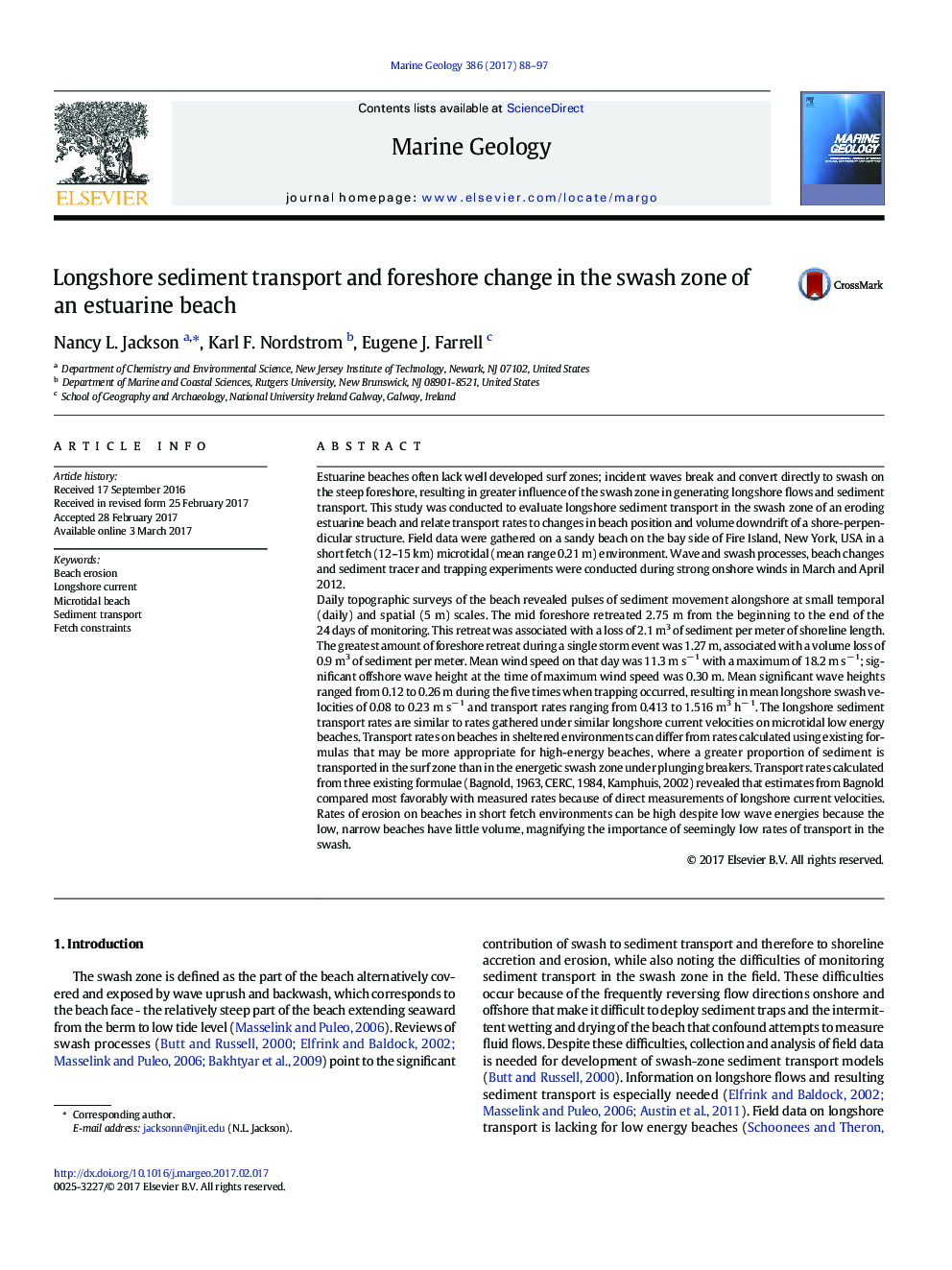| Article ID | Journal | Published Year | Pages | File Type |
|---|---|---|---|---|
| 5784514 | Marine Geology | 2017 | 10 Pages |
â¢Swash is the primary mechanism for longshore sediment transport on estuarine beaches.â¢Wave heights, longshore swash velocities and sediment transport rates can be low.â¢Small beach volumes enhance the geomorphic effect of low transport rates.â¢Large rates of erosion can occur for the small amounts of sediment moved.
Estuarine beaches often lack well developed surf zones; incident waves break and convert directly to swash on the steep foreshore, resulting in greater influence of the swash zone in generating longshore flows and sediment transport. This study was conducted to evaluate longshore sediment transport in the swash zone of an eroding estuarine beach and relate transport rates to changes in beach position and volume downdrift of a shore-perpendicular structure. Field data were gathered on a sandy beach on the bay side of Fire Island, New York, USA in a short fetch (12-15 km) microtidal (mean range 0.21 m) environment. Wave and swash processes, beach changes and sediment tracer and trapping experiments were conducted during strong onshore winds in March and April 2012.Daily topographic surveys of the beach revealed pulses of sediment movement alongshore at small temporal (daily) and spatial (5 m) scales. The mid foreshore retreated 2.75 m from the beginning to the end of the 24 days of monitoring. This retreat was associated with a loss of 2.1 m3 of sediment per meter of shoreline length. The greatest amount of foreshore retreat during a single storm event was 1.27 m, associated with a volume loss of 0.9 m3 of sediment per meter. Mean wind speed on that day was 11.3 m sâ 1 with a maximum of 18.2 m sâ 1; significant offshore wave height at the time of maximum wind speed was 0.30 m. Mean significant wave heights ranged from 0.12 to 0.26 m during the five times when trapping occurred, resulting in mean longshore swash velocities of 0.08 to 0.23 m sâ 1 and transport rates ranging from 0.413 to 1.516 m3 hâ 1. The longshore sediment transport rates are similar to rates gathered under similar longshore current velocities on microtidal low energy beaches. Transport rates on beaches in sheltered environments can differ from rates calculated using existing formulas that may be more appropriate for high-energy beaches, where a greater proportion of sediment is transported in the surf zone than in the energetic swash zone under plunging breakers. Transport rates calculated from three existing formulae (Bagnold, 1963, CERC, 1984, Kamphuis, 2002) revealed that estimates from Bagnold compared most favorably with measured rates because of direct measurements of longshore current velocities. Rates of erosion on beaches in short fetch environments can be high despite low wave energies because the low, narrow beaches have little volume, magnifying the importance of seemingly low rates of transport in the swash.
